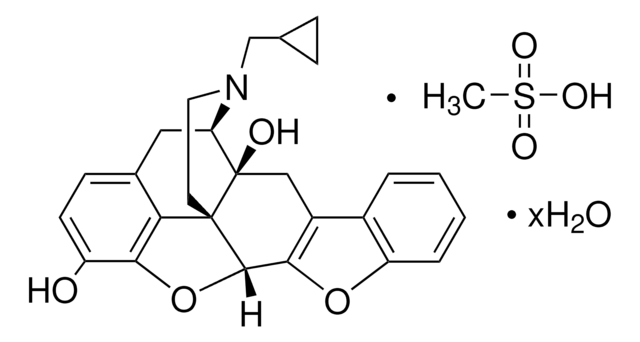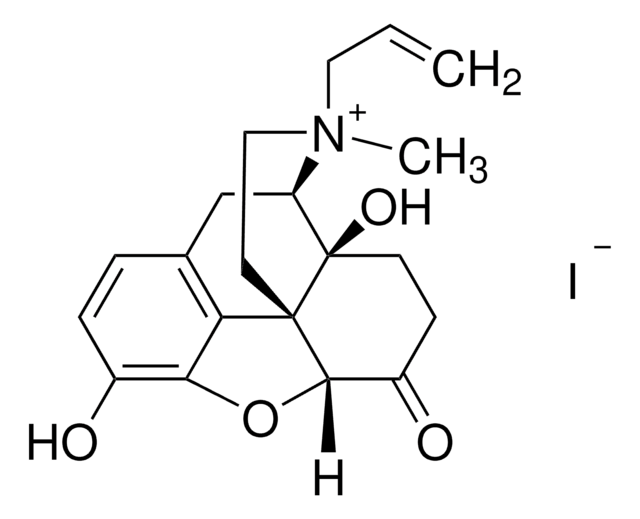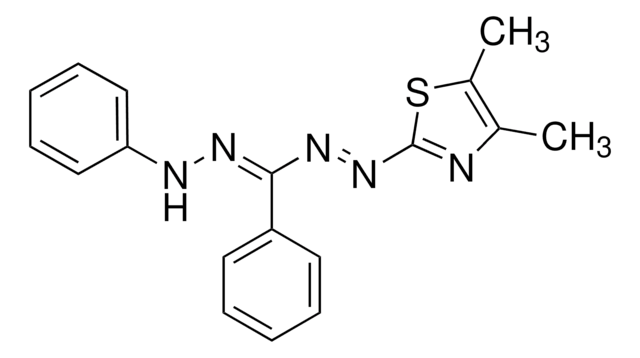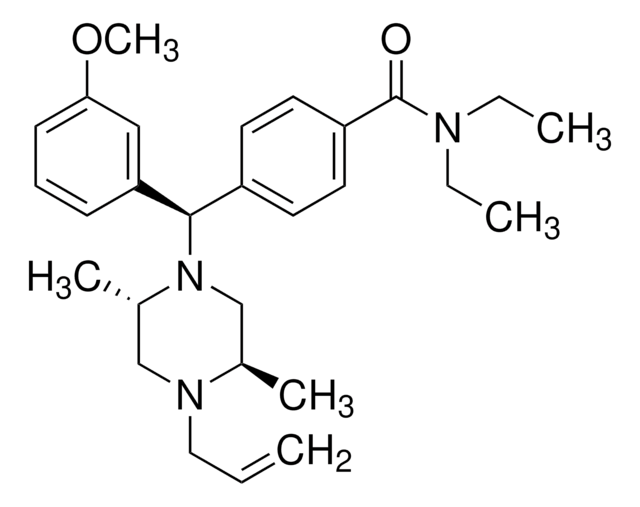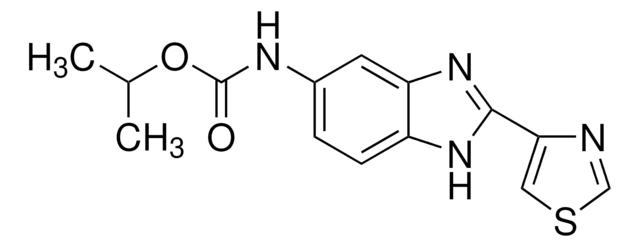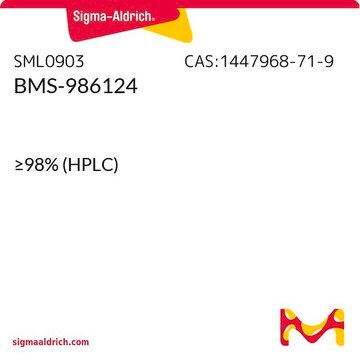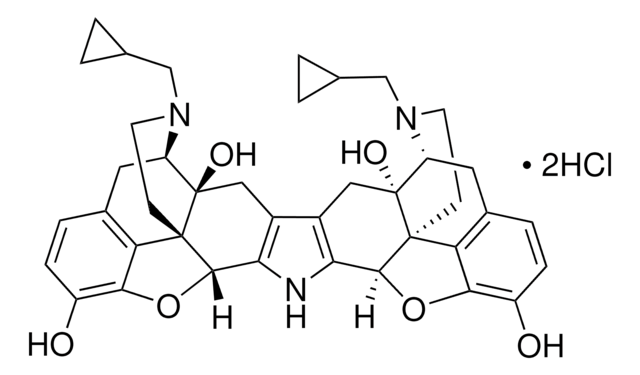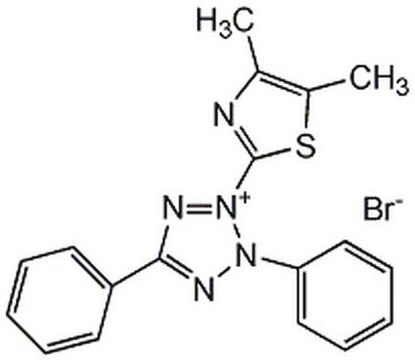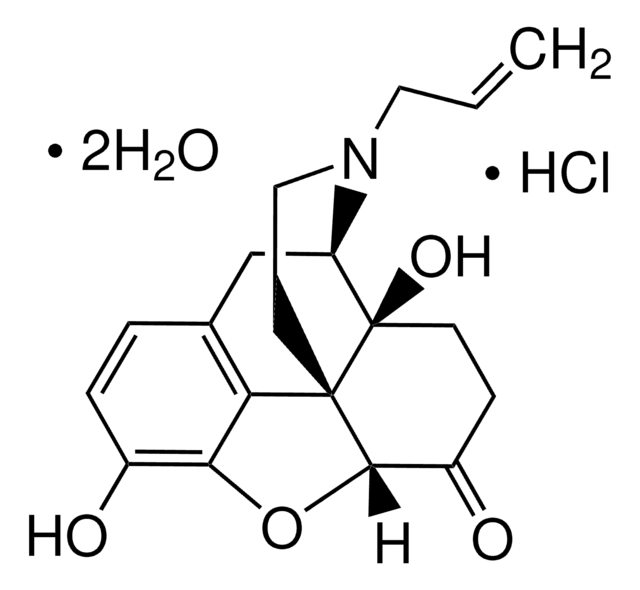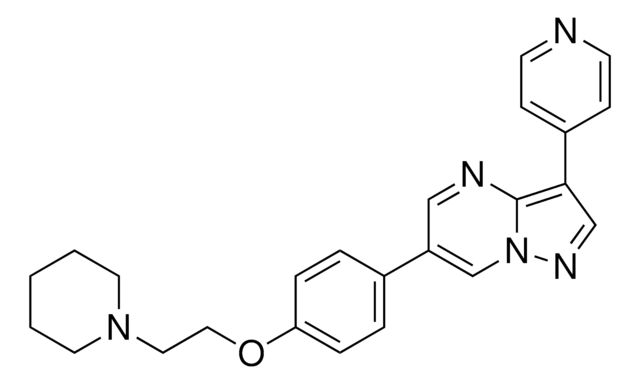B8312
BNTX maleate salt hydrate
≥98% (HPLC)
Synonym(s):
7(E)-Benzylidenenaltrexone maleate salt hydrate, BNTX-7 maleate salt hydrate, Morphinan-6-one,17-(cyclopropylmethyl)-4,5-epoxy-3,14-dihydroxy-7-(phenylmethylene)-,(5a,7E)- maleate salt hydrate
About This Item
Recommended Products
Quality Level
assay
≥98% (HPLC)
form
powder
storage condition
desiccated
color
yellow
solubility
DMSO: >20 mg/mL
storage temp.
−20°C
SMILES string
O.OC(=O)\C=C/C(O)=O.Oc1ccc2C[C@H]3N(CC[C@@]45[C@@H](Oc1c24)C(=O)\C(C[C@@]35O)=C\c6ccccc6)CC7CC7
InChI
1S/C27H27NO4.C4H4O4.H2O/c29-20-9-8-18-13-21-27(31)14-19(12-16-4-2-1-3-5-16)23(30)25-26(27,22(18)24(20)32-25)10-11-28(21)15-17-6-7-17;5-3(6)1-2-4(7)8;/h1-5,8-9,12,17,21,25,29,31H,6-7,10-11,13-15H2;1-2H,(H,5,6)(H,7,8);1H2/b19-12+;2-1-;/t21-,25+,26+,27-;;/m1../s1
InChI key
AGUNLJBLOJAUKM-ZKJXOIBSSA-N
Application
Biochem/physiol Actions
Features and Benefits
signalword
Warning
hcodes
Hazard Classifications
Aquatic Acute 1 - Eye Irrit. 2
wgk_germany
WGK 3
flash_point_f
Not applicable
flash_point_c
Not applicable
ppe
dust mask type N95 (US), Eyeshields, Gloves
Certificates of Analysis (COA)
Search for Certificates of Analysis (COA) by entering the products Lot/Batch Number. Lot and Batch Numbers can be found on a product’s label following the words ‘Lot’ or ‘Batch’.
Already Own This Product?
Find documentation for the products that you have recently purchased in the Document Library.
Customers Also Viewed
Our team of scientists has experience in all areas of research including Life Science, Material Science, Chemical Synthesis, Chromatography, Analytical and many others.
Contact Technical Service